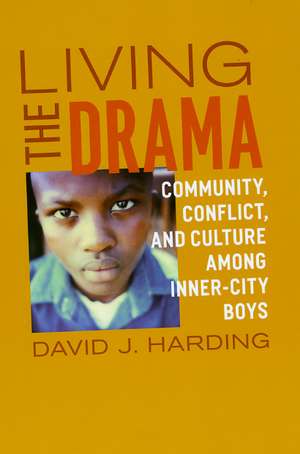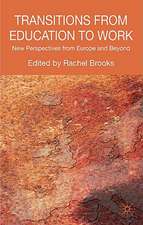Living the Drama: Community, Conflict, and Culture among Inner-City Boys
Autor David J. Hardingen Limba Engleză Paperback – mai 2010
David J. Harding studied sixty adolescent boys growing up in two very poor areas and one working-class area. In the first two, violence and neighborhood identification are inextricably linked as rivalries divide the city into spaces safe, neutral, or dangerous. Consequently, Harding discovers, social relationships are determined by residential space. Older boys who can navigate the dangers of the streets serve as role models, and friendships between peers grow out of mutual protection. The impact of community goes beyond the realm of same-sex bonding, Harding reveals, affecting the boys’ experiences in school and with the opposite sex. A unique glimpse into the world of urban adolescent boys, Living the Drama paints a detailed, insightful portrait of life in the inner city.
Preț: 253.10 lei
Nou
Puncte Express: 380
Preț estimativ în valută:
48.44€ • 50.04$ • 40.31£
48.44€ • 50.04$ • 40.31£
Carte tipărită la comandă
Livrare economică 25 martie-08 aprilie
Preluare comenzi: 021 569.72.76
Specificații
ISBN-13: 9780226316659
ISBN-10: 0226316653
Pagini: 336
Ilustrații: 5 line drawings, 6 tables
Dimensiuni: 152 x 229 x 20 mm
Greutate: 0.51 kg
Editura: University of Chicago Press
Colecția University of Chicago Press
ISBN-10: 0226316653
Pagini: 336
Ilustrații: 5 line drawings, 6 tables
Dimensiuni: 152 x 229 x 20 mm
Greutate: 0.51 kg
Editura: University of Chicago Press
Colecția University of Chicago Press
Notă biografică
David J. Harding is assistant professor in the Department of Sociology and assistant research scientist at the Population Studies Center at the University of Michigan.
Cuprins
Preface
Acknowledgments
1 Introduction
2 The Social Organization of Violence in Poor Neighborhoods
3 Neighborhood Violence, Peer Relationships, and Institutional Distrust
4 Neighborhood Social Attachment
5 The Cultural Context of Disadvantaged Neighborhoods
6 Cultural Heterogeneity, Romantic Relationships, and Sexual Behavior
7 Cultural Heterogeneity and Education
8 Conclusion
Appendix: Fieldwork Methodology
Notes
References
Index
Acknowledgments
1 Introduction
2 The Social Organization of Violence in Poor Neighborhoods
3 Neighborhood Violence, Peer Relationships, and Institutional Distrust
4 Neighborhood Social Attachment
5 The Cultural Context of Disadvantaged Neighborhoods
6 Cultural Heterogeneity, Romantic Relationships, and Sexual Behavior
7 Cultural Heterogeneity and Education
8 Conclusion
Appendix: Fieldwork Methodology
Notes
References
Index









